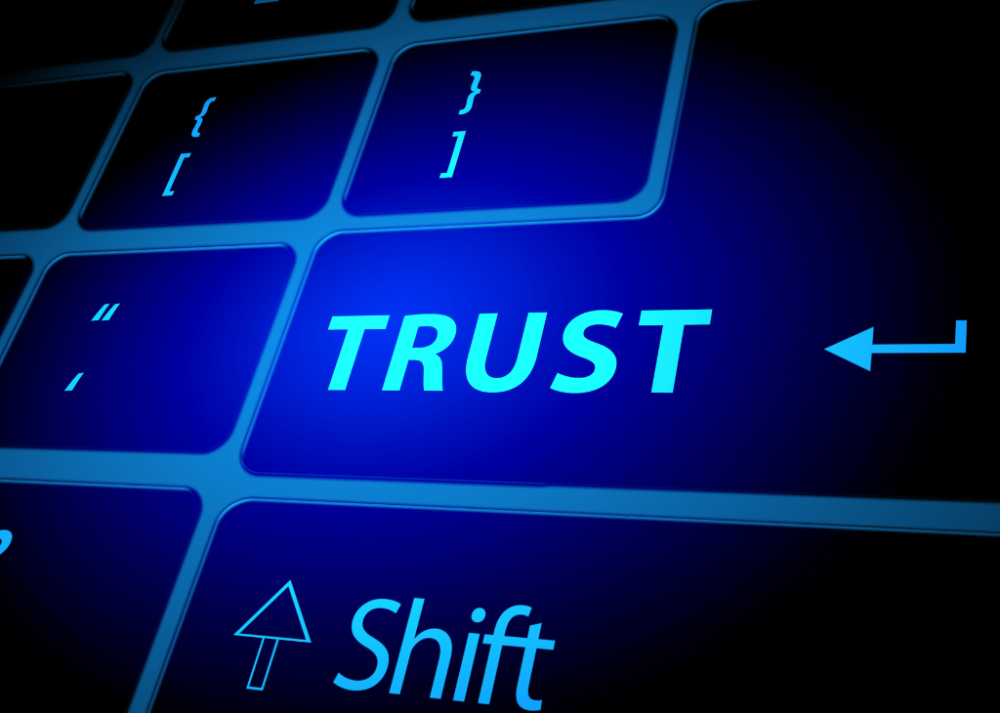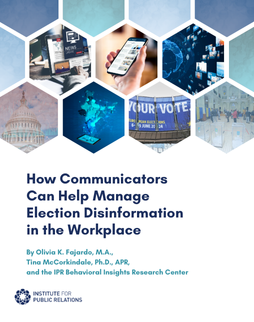
This blog is provided by the IPR Measurement Commission.
What kind of news source do you trust most to get your vital information? Turns out, the answer may depend on your age.
That’s because a recent survey on news consumption preferences conducted by Researchscape in collaboration with Fullintel, results found that media preferences often differ sharply along generational lines.
The survey findings indicated that older generations are more likely to trust broadcast news, while younger generations tend to prefer online news, email newsletters, and social media. Younger generations also indicated one of their most preferred types of newsletters are of the personal/influencer variety.
The omnibus survey conducted in February 2024 gauged the opinions of more than 1,000 U.S. adults across the country weighted against the U.S. population.
Overall, respondents ranked broadcast news as the most trusted news source. It was followed by print newspapers, cable news, online news, email newsletters, and social media.
The Great Age Schism in News Preferences
But while more than 80 percent of the Silent Generation (born 1928-45) and more than 60 percent of Baby Boomers (1946-64) said they trust either broadcast or cable news the most, that number dropped to just 43 percent of Millennial (1981-96) and 37 percent of Generation Z (1997-2012) respondents.
As mainstream news organizations face near-constant layoffs and traditional news sources such as broadcast and cable deal with declining audiences, there appears to be an opportunity for newer mediums such as online news and email newsletters to become the most trusted sources for younger generations.
Case in point: Online news, trusted most by zero percent of the Silent Generation, was the go-to choice for nearly a quarter of Millennials and 18 percent of Gen Z.
Social media was also more trusted among younger generations, with nearly 20 percent of Gen Z respondents trusting the medium the most compared to none from the Silent Generation, just three percent of Boomers, and nine percent of Generation X (1965-80).
Indeed, even though social media ranked last in overall trust, the percentage of Millennials and Gen Z respondents was almost 70 percent of all those who ranked social media as their No. 1 news source.
Email Newsletters: A Small, But Growing, Medium
While trust in email newsletters was relatively low across the board, they still ranked higher overall than social media – and earned the most trust (seven percent) among Gen Z participants.
Part of this could be because newsletters have traditionally been associated with retailers or brands, but have shifted more towards news-based content over the past decade or so.
Self-identified newsletter subscribers were multigenerational, with a nearly even split of between 18 and 25 percent of respondents in every age category saying they subscribe to newsletters published by newspapers or magazines. Newspaper/magazine newsletters and personal/influencer newsletters were also two of the most popular subscriptions for Millennials and Gen Z’s.
Those who subscribe to personal/influencer newsletters were also much more likely to trust newsletters than those who don’t subscribe.
Of newsletter types, retailer/brand and loyalty program newsletters were the most popular followed by newspaper/magazine newsletters. But news-driven newsletters combined – including local/regional and industry newsletters – captured the largest share of email newsletter readership.
The Top 10 Newsletters
The top 10 newspaper/magazine newsletters, according to the survey, were produced by:
The New York Times
CNN
The Washington Post
The Wall Street Journal (WSJ)
NPR
Morning Brew
The Atlantic
Wired
Politico
The Hustle
Generational differences, however, also made an appearance when analyzing the top five most popular news-driven newsletters:
— The New York Times, CNN, The Washington Post, and The WSJ’s newsletters are popular among Gen Z respondents, but NPR newsletters are not.
— NPR newsletters are more popular among Boomers and Gen X’ers.
— The most popular email newsletter among Millennials is from The New York Times.
How PR Pros Can Use the Survey Data
These findings could be considered something of a canary in a coal mine for PR and communications professionals.
That’s because while broadcast and cable news are still an important medium for reaching older generations, the survey indicates that the popularity of both mediums nose-dive among younger cadres.
That’s likely a sign that broadcast and cable news will grow even less relevant in the future, while other mediums will likely become more relevant. It stands to reason that PR pros who want to reach younger audiences (and, likely, all audiences in the future) will need to focus more on social media, online news, print news, and to a lesser extent, email newsletters.
News-driven email newsletter platforms such as Substack may also have an advantage over legacy media among some younger consumers because trust in traditional media has declined precipitously over the past several years.
Many Substack newsletters are produced by trained journalists with name recognition, but without the distrust and baggage of legacy media brands (which in most cases are owned by large corporations). Newsletters also have a personal touch most mainstream news sources just cannot replicate.
Indeed, while trust in the mainstream media has dropped, at the same time some research shows trust in email newsletters has remained relatively constant. And as news-driven email newsletter platforms mature, it’s possible they’ll become even more trusted in the future.
Considering Email Newsletters in Media Measurement
PR professionals already know how to measure traditional and social media. But how should we measure email newsletter content?
There’s no site traffic or similar third-party metric sources for Substack-style news content, but you can get a good sense of audience from authors’ subscriber counts. Engagement metrics can be determined by likes and comments. And you can even reach out to individual writers to ask for click-through and open rates (there’s no guarantee they’ll provide that data, but it doesn’t hurt to ask).
Newsletters are important because they have a captive audience. From the survey, we also know that younger people trust this content more than older audiences. And as broadcast and print sources decline, it is likely that newsletters–more personalized news–will claim their share of trust.
That’s why it’s important to include email newsletters in your measurement program. It also means that, when measuring, PR professionals may consider giving newsletters a higher impact weight for this demographic than for others.

Angela Dwyer is Head of Insights at Fullintel, IPR Measurement Commission director, and IPRRC board member. She is an award-winning, media measurement expert who helps brands improve business results through data-driven, actionable insights.

Tony Cheevers has worked as a sales and marketing leader for global brands like Schlumberger, KLM Royal Dutch Airlines, Virgin Aviation Group and the United States Postal Service. He is currently the Customer Success Officer at Researchscape International where he’s on a mission to make compelling data available to every storyteller.’



